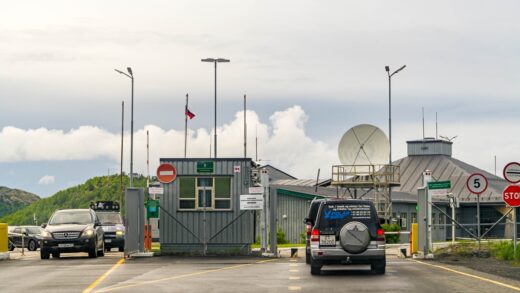The article was first published on Lonely Planet China magazine, Issue 2021/08
This English version was translated from Chinese original with DeepL. I apologize for any mistakes made by this AI translation tool.
The northernmost points of the three continents circled into the Arctic, Asia and North America, are inhospitable, cold and uninhabited, and you have to join an expedition to get there, with the exception of the northernmost point of Europe. The only exception is the northernmost point of the European continent, which almost every self-drive in Europe “looking north” wants to reach as their ultimate goal.
But perhaps the challenge is more “finding it exactly” than getting there: most people go to a place called Nordkapp. At 71°10’N, it is indeed the northernmost point on the European road network. However, when I looked closely at the map, I found that it is located on an island, which needs to be reached through an undersea tunnel. If this is the “northernmost point in Europe”, wouldn’t the more northerly islands in the Arctic Ocean (such as Svalbard) qualify?
The true “northernmost point on the European continent” is Kinnarodden, 80 kilometres away, at 71°7’N latitude. However, to reach this point, which is not accessible by road, you have to make a full day’s hike from Mehamn, the nearest town. On the other side of Mehamn is the Slettnes lighthouse, which can be reached by road, despite its latitude of 71°4’N. And, compared to Nordkapp, which charges a whopping NOK 250 (nearly R200) for admission, it’s surprisingly free to enter 24 hours a day. It’s more of a “save money and hassle” experience than a ritualistic one for the poor and lazy among us. Well, this is it!
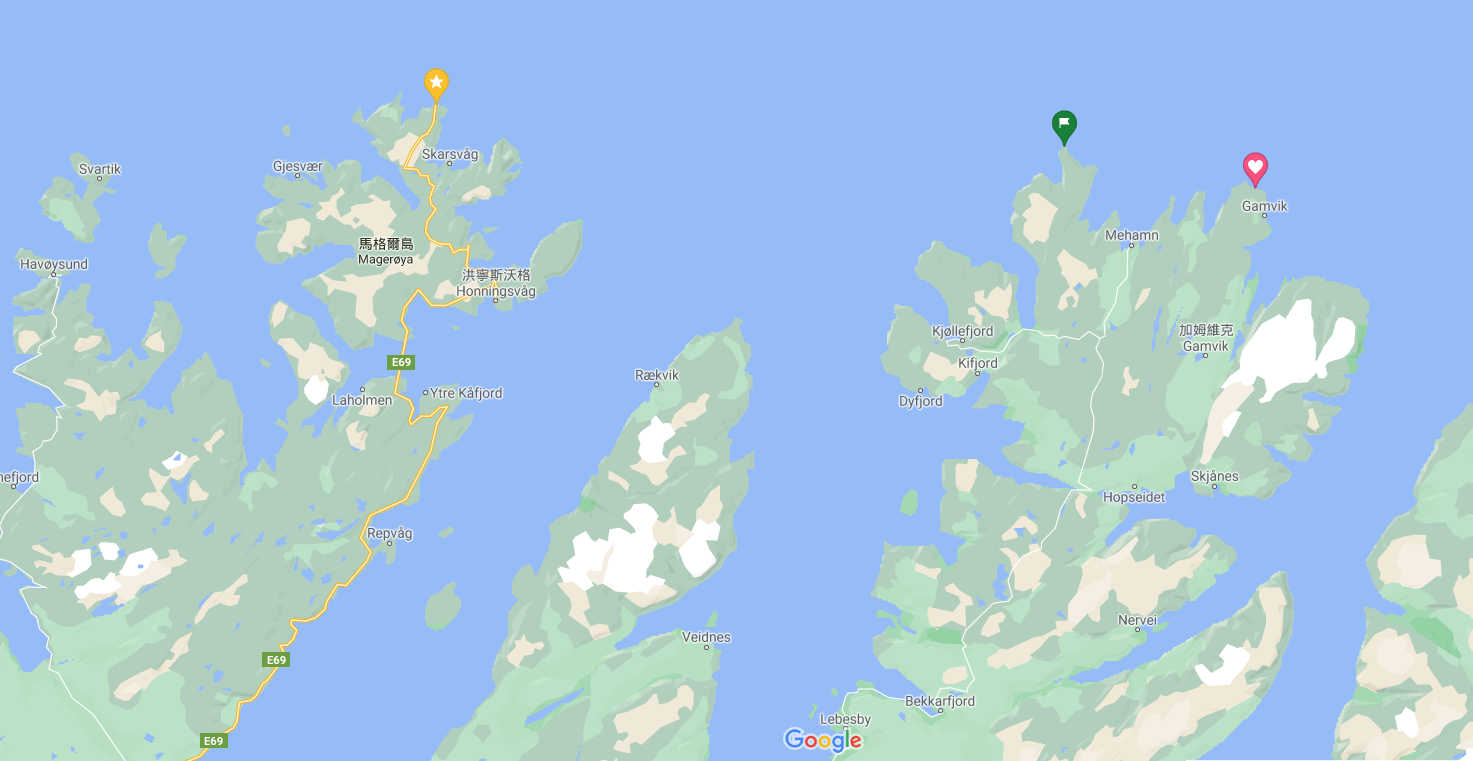
It was late afternoon when we passed through border control and officially set foot on Norwegian soil. The Arctic is so vast and inhospitable that the scale of all maps is meaningless. The distance from the border to the Slatny lighthouse looks like a stone’s throw on the map, but it’s 350 kilometres and over five hours away! But in the middle of the day, there is no such thing as a “night walk”.

Unlike Russia’s monotonous Arctic roads, Norway’s roads to the “northernmost point” are almost always built along magnificent fjords. Often, just as soon as we’ve finished admiring an amazing view, a bend in the road offers a better one! What should be a boring drive becomes a pleasure.

Getting closer to our destination, we only had a few towns left to cross. An overcast sky unexpectedly covered the early morning polar day with a romantic blue hue that only briefly appeared after sunset. “Look, what’s that!” My co-pilot companion suddenly shouted. My eyes widened to find what turned out to be several deer, lined up and sidling across the open road ahead.
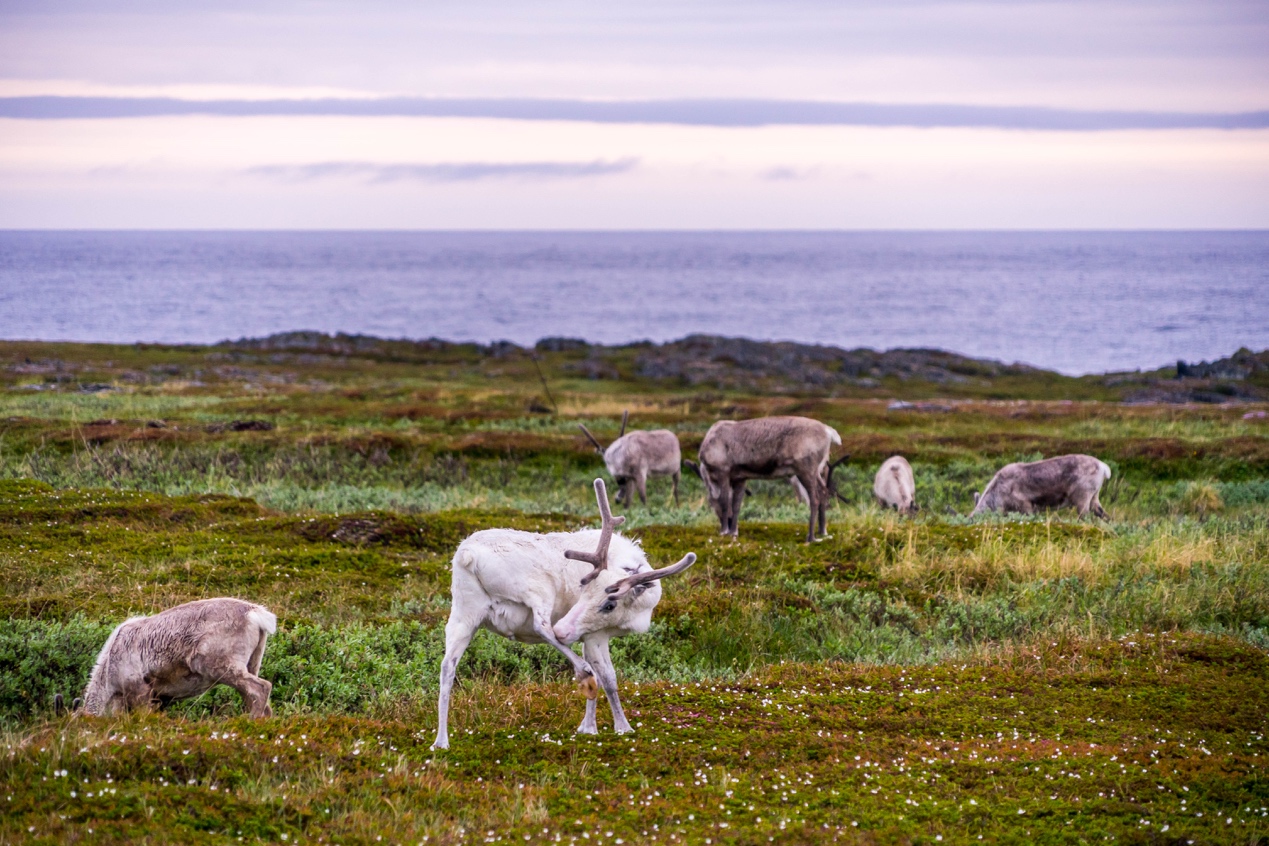
Quietly, I parked and turned off the engine, and all that was left outside was the silence of the world. Through the windshield, it seemed to me that instead of a highway next to an Arctic town, the TV show I always watched as a child, Animal World, was broadcasting live. I didn’t know if the deer that appeared alone were wild or belonged to one of the herders. But in this case, the answer no longer mattered.
When the deer saw us approaching, they didn’t panic, but remained as calm and collected as before. One deer, seemingly attracted to us, even came up to the car and lingered for a long time. For a moment, its silhouette appeared just in the middle of the rearview mirror. I hastily grabbed my camera to capture this heartwarming moment in the lens.
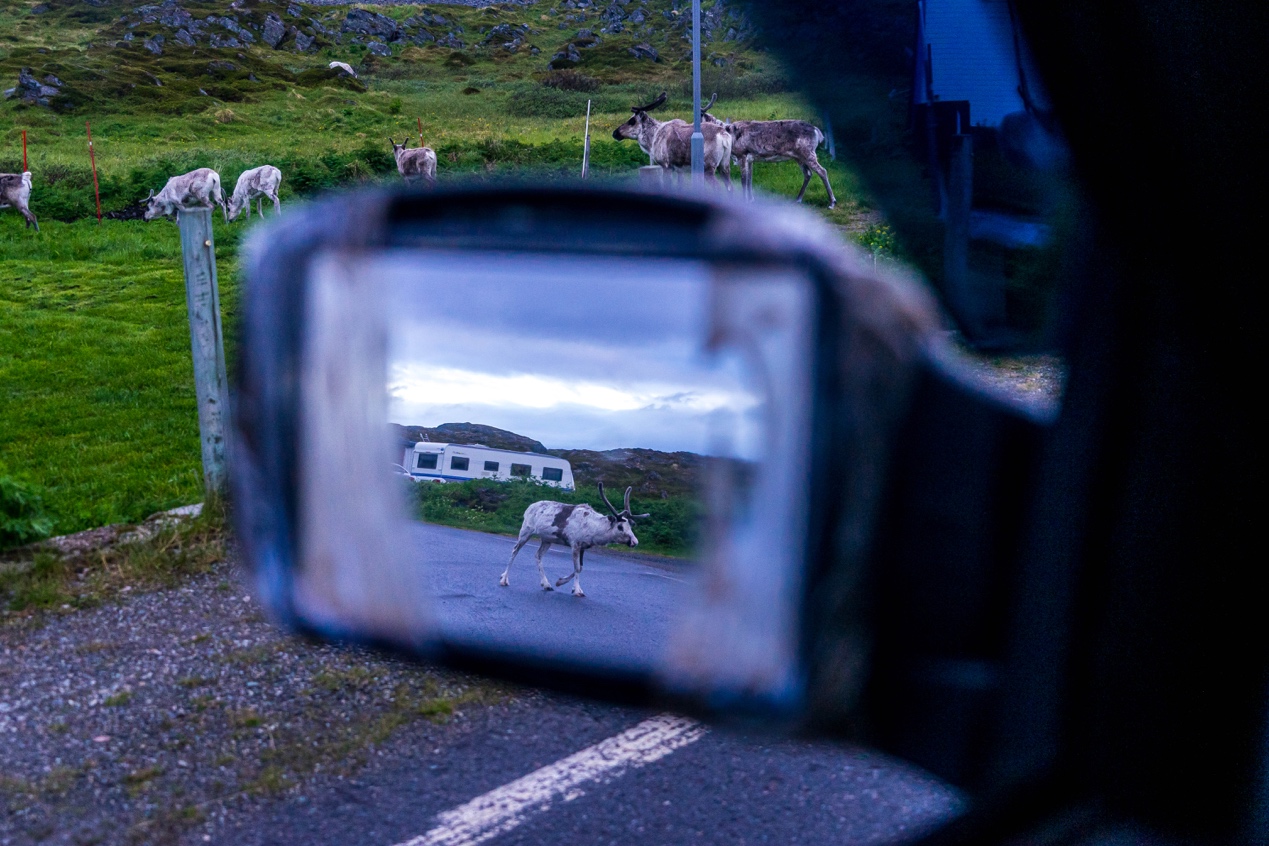
From then on, the occasional deer accompanied us for the last 10 km until the red and white Slattery Lighthouse on the Arctic Ocean became visible. The clearing in front of the lighthouse was, not surprisingly, already full of RVs from various countries of north seekers. Although we were just a humble converted SUV, getting into a warm and comfortable sleeping bag and spending the night in the sound of the Arctic Ocean was not only ritualistic, but also much better than staying in a nearby B&B for thousands of dollars a night, wasn’t it?

“The land ends and the sea begins”, a phrase originally used to describe the westernmost point of the European continent, Cape Roca, is, in my opinion, more appropriate here. After all, there is no “westernmost” point of the earth, from Cape Roca all the way west across the Atlantic Ocean, eventually will reach the “more west” of the American continent; however, from here all the way north into the vast Arctic Ocean, until the North Pole, there will no longer be any continents. There will be no more continents until we reach the North Pole.

Epilogue: Farewell to the Arctic
The prices in Scandinavia were even higher than we thought, so we couldn’t really find a reason to stay longer. So, we drove during the day, stopped at a quiet lake at night and camped, opened a box of canned food with rye bread, and made it through the day. After almost a week in Russia on the way in, we were back in the Arctic Circle in two days on the way back.


A carefully constructed “Santa Claus Village”, located at the intersection of the Finnish Arctic Highway and the Arctic Circle, is the most recognizable attraction in the European Arctic. With its exaggerated signs, large scale, and even beautiful brochures in seven or eight languages ……, I knew it was time to wave goodbye to the desolate North Pole when I felt the familiar “tourist vibe”.

Most visitors come here in winter, for Christmas and to see the Aurora Borealis. But it’s the polar day of June, so not only is it not Christmas, it’s not even aurora borealis at night, yet it just gave us the opportunity to enjoy Santa Claus Village all to ourselves. In the square, the Arctic Circle is clearly marked, which satisfies our regret that we didn’t have any pictures of the Arctic Circle in Russia. Even the “Talk to Santa”, which always has a long queue in winter, was also available for “talk to Santa”.

The goofy “Santa Claus” sat alone in the middle of the hall, greeting admirers from all over. I remember his first words were, “Where are you from?” It was a routine question that he must have asked thousands of visitors. I suddenly had the bright idea to give a “different” answer: “We are …… from the North Pole!” I hadn’t lied to him, we had indeed just come from the North Pole. Apparently, he had rarely heard such an answer and froze for a moment, but then he burst out laughing: “Really? I guess we’re old friends!”
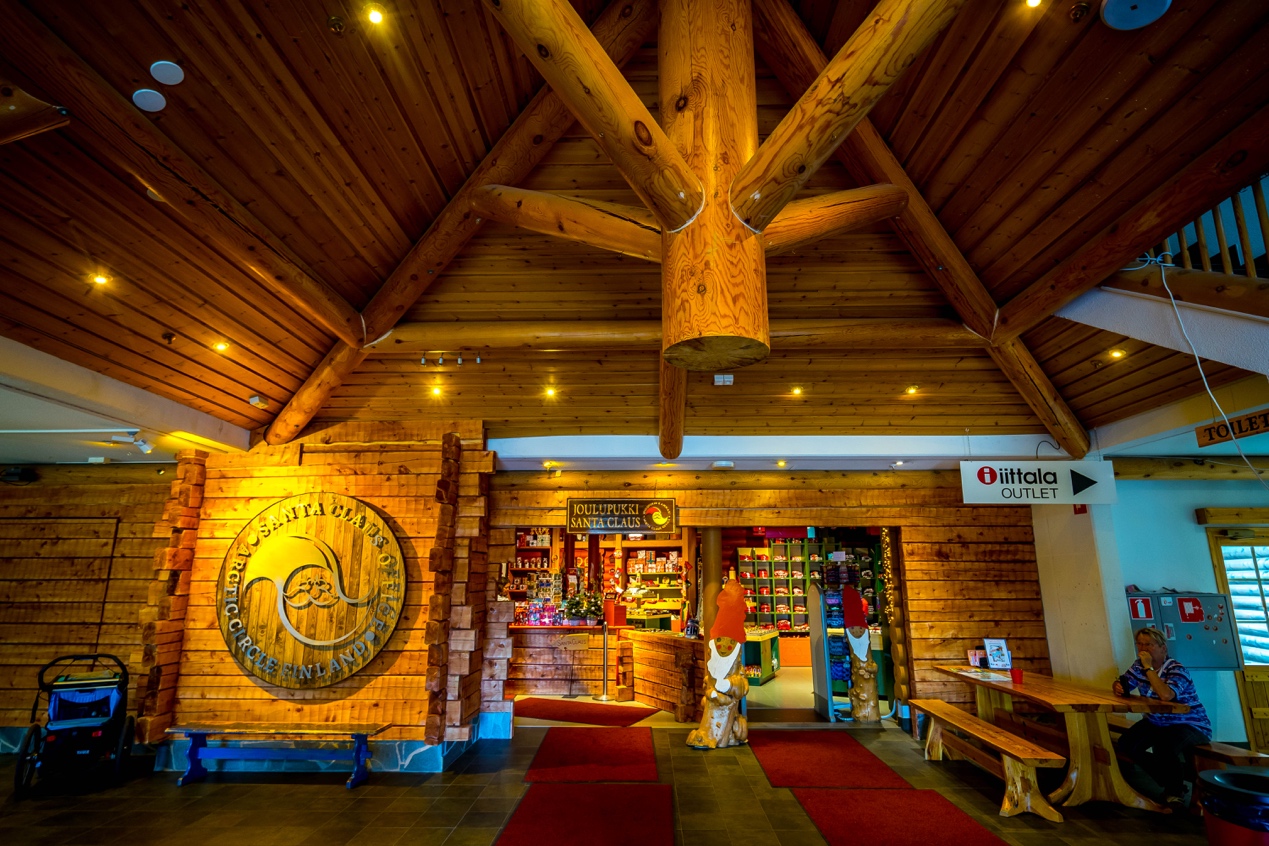
The conversation with “Santa” was completely free, but the shrewd businessmen had already worked out their profit model: if you want to download the photo with “Santa”, you have to pay 30 Euros first. In the end, we (of course) didn’t buy the “overpriced photo”, after all, in my mind, the long journey through the North Pole was enough to leave behind the thrilling memories of the journey.


